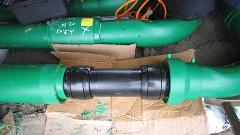15 February 2017
1. Start with the Longest Pipe Run
Especially when using pipe coils it is a good idea to always start by laying out and installing the longest pipe run, then proceed with the second longest and so on. This way, if a mistake is done, either when measuring and cutting the pipe, or when welding the termination and end fittings, the pipe can be used for one of the shorter pipe runs instead.

2. In Case of a Power Outage During Welding - Cool Down & Re-weld
Interruptions in power supply sometimes happen, for a variety of reasons. Sometimes the power generator runs out of fuel, sometimes it is just someone pulling out the wrong power cord. If this happens in the middle of a welding operation - just stay calm.
It is completely allowed to re-start the welding process - BUT - first the socket needs to cool down completely. Failure to do so can lead to over welding where the plastic is over-heated, risking the structural integrity of the joint.
Just let the welding clamping tool stay in place, then wait for at least 2 hours, then re-weld the socket as if nothing happened.

3. Check Conductivity Before Welding
To ensure continuous conductivity throughout the pipe run, a conductive connector should be used wherever two pipes or a pipe and a fitting is welded together using a welding socket. Use the conductivity tester to verify continuity for each joint, and do this BEFORE it is welded.
In case a conductive connector is missing it can easily be inserted at this point. This is way better than having to cut a socket out and replace it once it is already welded.

4. Bring Extra Parts and Repair Sockets
Rarely does everything go exactly according to plan and every now and then tugging along a few extras will save the day. Bring some extra meters of pipe and some extra welding sockets, tees, elbows, termination and transition fittings to the installation site. Also bring a small number of repair type welding sockets that simplify the process of replacing regular welding sockets if this becomes necessary.
Not having to wait for the delivery of missing items prevents unnecessary hold-ups in installation.

